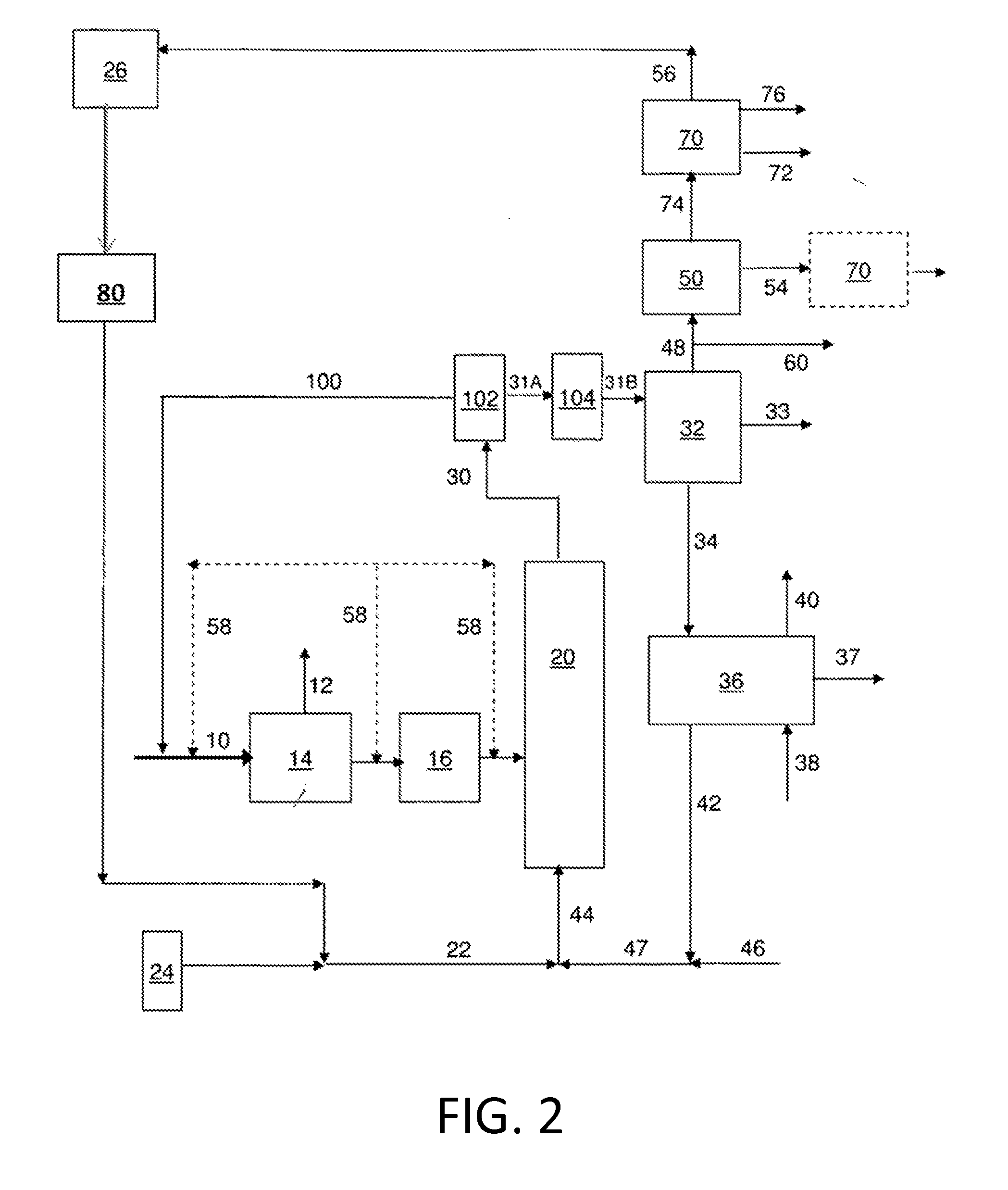Olefin conditioning in a fast catalytic pyrolysis recycle process
a technology of pyrolysis and olefin conditioning, which is applied in the direction of carboxylic compound preparation, ether preparation, thermal non-catalytic cracking, etc., can solve the problems of thermal instability, liquid product mixture, and inability to meet the requirements of the app nor the syngas process, so as to reduce the formation of char and increase the production of useful products
- Summary
- Abstract
- Description
- Claims
- Application Information
AI Technical Summary
Benefits of technology
Problems solved by technology
Method used
Image
Examples
Embodiment Construction
[0065]Since olefins are commonly produced, the invention is generally applicable to any biomass pyrolysis reaction. Preferably, the biomass feedstock comprises a solid hydrocarbonaceous material. The biomass feedstock may comprise, for example, any one or combination of the biomass sources that are mentioned in the Glossary section. The pyrolysis reactor can be without a solid catalyst; however, preferably, the pyrolysis reactor comprises a solid catalyst for fast catalytic pyrolysis (FCP). The type of reactor and the type of solid catalyst (if present) are not limited, and can be generally of the type known for conversion of biomass to fluid hydrocarbonaceous streams. Examples of suitable apparatus and process conditions for FCP are described in the patent application of Huber at al. [US20090227823] that is incorporated herein by reference. Conditions for FCP of biomass can be selected from any one or any combination of the following features (which are not intended to limit the br...
PUM
| Property | Measurement | Unit |
|---|---|---|
| Temperature | aaaaa | aaaaa |
| Temperature | aaaaa | aaaaa |
| Fraction | aaaaa | aaaaa |
Abstract
Description
Claims
Application Information
 Login to View More
Login to View More - R&D
- Intellectual Property
- Life Sciences
- Materials
- Tech Scout
- Unparalleled Data Quality
- Higher Quality Content
- 60% Fewer Hallucinations
Browse by: Latest US Patents, China's latest patents, Technical Efficacy Thesaurus, Application Domain, Technology Topic, Popular Technical Reports.
© 2025 PatSnap. All rights reserved.Legal|Privacy policy|Modern Slavery Act Transparency Statement|Sitemap|About US| Contact US: help@patsnap.com



